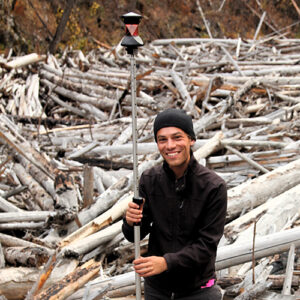
- This event has passed.
MEAS Department Seminar
April 17, 2023 | 3:30 pm - 4:30 pm
Speaker – Nakul Deshpande, Dept. of Physics, NCState University (hosted by K. Wegmann), in person & on Zoom. 
Seminar Title – Adventures in pouring sandpiles or: how I learned to stop worrying and love the lab
Abstract – Pour sand on a table. What happens? At first blush, not much. Grains fall and form a pile. When pouring stops, it all rests at the angle of repose. To our eyes, this sandpile is frozen, immobile: jammed. It turns out that, if viewed with the help of sensitive laser interference, this pile is anything but immobile. It creeps incessantly for 11 days (the longest we can practically measure), albeit at a rate that decreases ever so slowly. Creep manifests as discrete zones of deformation that flicker in and out of existence; the view is reminiscent of corn popping on a stove. Disturbing the sandpile adds new phenomenology. Heat the pile and creep rates increase. Intrinsic relaxation reverses and creep is rejuvenated. If instead the sandpile is tapped, it compacts, and creep slows even further: the pile ages.
Soils in nature likewise creep and blanket terrestrial hillslopes. Sand and soil share fundamental elements: a disordered structure, an absence of thermal agitations, and the relentless pull of gravity: both are granular materials. Although it may seem disconnected from the ‘reality’ of the field, the sandpile is a model system to optimize observations that would otherwise be inaccessible, slow, and impractical to collect in the field. Undisturbed creep in an experimental sandpile sharply departs from existing conceptual and modelling approaches for soil deformation in nature, and in turn how landscapes evolve over geologic time. No simple mapping from the laboratory to the field exists. Further, we have little idea of *why* an undisturbed sandpile creeps under gravity alone, nor do we possess a framework to account for the mechanisms by which disturbances modulate and tune creeping motions.
Current research at NC State is directed towards uncovering and developing such mappings. One arm of the work searches for dynamical signatures of earth motions in remotely-sensed data (i.e. can we see creeping `popcorns’ from space?). A second arm develops experiments wherein we visualize structures and forces in highly idealized granular systems, where fluctuations of contact forces under weak driving may be responsible for creep. This work is an adventure, exploring potentialities that connect the fundamental mechanics of granular materials with the messy soils we find in nature. Contained within is the possibility to apply these mappings to other surface processes and the richness of fluid-particle mixtures that constitute our planet’s surface.